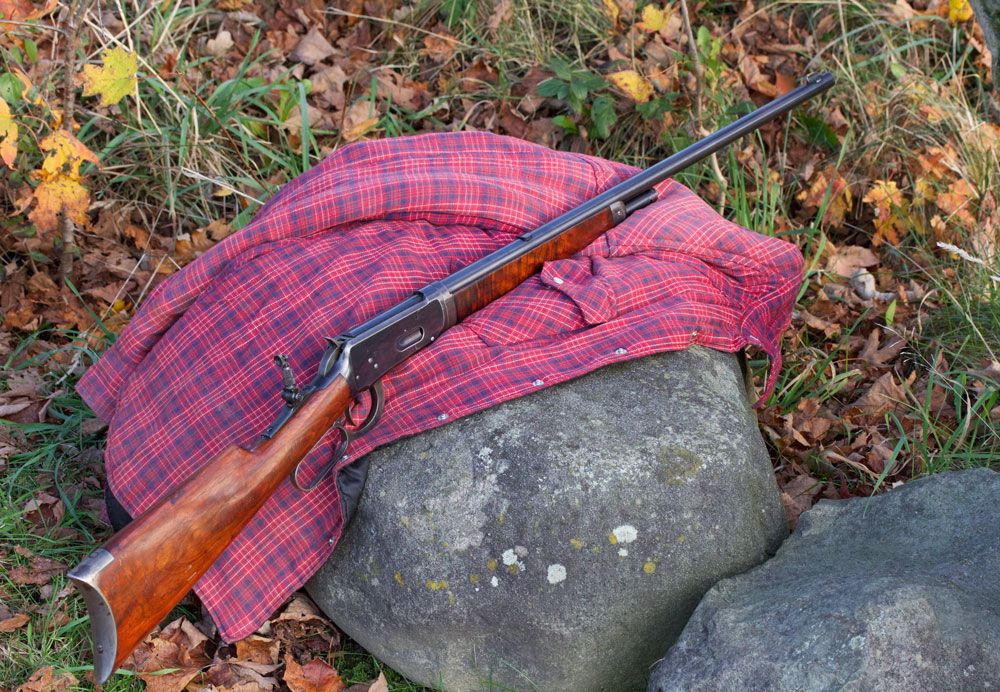June 11, 2014
 Offline
OfflineIt was a beautiful late fall afternoon today. The kind that makes a fellow think of old Winchesters, cedar rail fences, corn fields, and Whitetail Deer. I was inspired to take the rifle I have most recently acquired, and shoot some photos. Here it is …
Winchester Model 1894 30 W.C.F., Takedown, shipped March 31, 1903.
January 22, 1999
 Offline
OfflineWell Kirk,
It seems that you know how to enjoy the nice fall weather for sure.
Thanks for sharing that excellent picture of a really nice Winchester Model 1894.
"I Would Have Rather Lived Through The Industrial Revaluation"
"Instead of The Space Age"
From
The Twilight Zone
December 30, 2011
 Offline
OfflineNice picture as usual Kirk. I see your farmland was also blessed with a few hard heads.
Looking forward to your range report with that rifle when it happens. I’ll also be interested in hearing how your 44-40 does and wish you luck.
Brad
June 11, 2014
 Offline
Offlinebhutch, stamped on the top of the dovetail is ‘W.F. Sheard’. Along the base of the blade is stamped some really tiny letter that seem to say ‘W.30/30’. Here are a couple photos. Note how thick the end of the barrel is. I really like that …. makes the barrel more accurate. This front sight is a beauty for accurate shooting with the Lyman tang sight that came with it as well. The tang sight in the photo in the original post is an original Marbles which I have temporarily on the gun, as the original Lyman has the tiny hinged peep swivelling down with each shot and I need to tighten it up so it stays in place.
[Image Can Not Be Found]
December 30, 2011
 Offline
OfflineKirk
I think that is really great to have a W.F. Sheard front sight on there. Don’t see them as often as the MARBLE ones. I read in an Elmer Keith book that he thought they were a terrible sight until a flat was filed on the bead…can’t imagine him writing about disliking something….
Looks like it could be the original sight to the gun. Great looking rifle.
Brad
December 30, 2011
 Offline
OfflineMy best guess would be that he used the aperture sight in a low light condition. My experience has been visibility is tough if the bead is not reflecting a little light. In the case of your gun or mine with a blank in the rear dovetail slot, there is no alternative sight to use under clouds or evergreens near dark. It may have been just stain or tarnish of some kind on the bead and touching it with a file brightened it up. He did comment after the filing it became one of the best front sights to have.
I don’t know a lot of his other writings, but he had a chapter on using iron sights in his first book that I thought was very interesting. He also discussed English style express sights a bit. I believe he liked them more for short ranges in the woods over the aperture sight, which he had previously thought of as being the best type in all situations. He talked about willingness to change one’s views and accept new ideas on a subject, and also still endorsed the aperture sight for just about everything else.


 Log In
Log In







